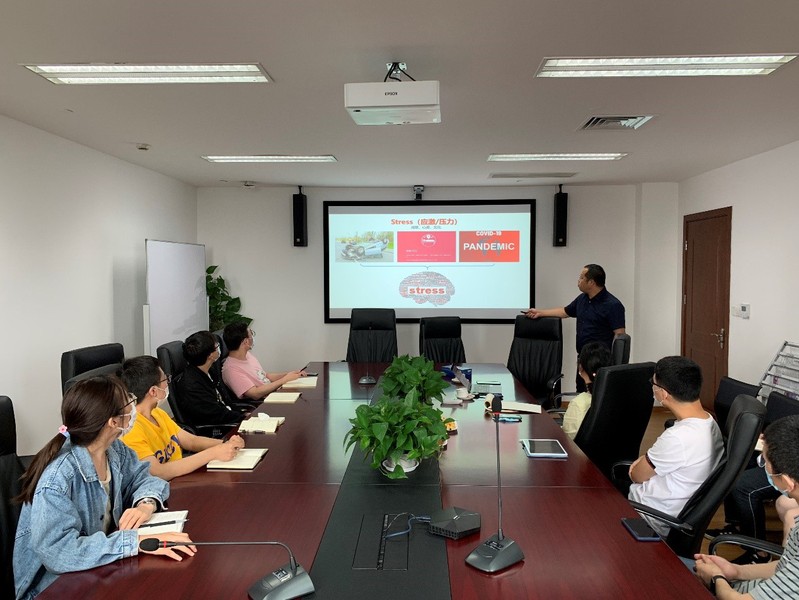Scientific researchers should ride the wave and blaze the trail. With the vigorous development of cross-disciplinary collaborations, a Conversation between Optics & Biology was launched at the Centre for Artificial-Intelligence Nanophotonics on June 24. Hu Ji, a professor at Shanghai University of Science and Technology, was invited to give a report on Decoding the Stressful Brain—through engineering approaches. Staff members and the students of the center joined this academic exchange.
In his report, Professor Hu discussed the inhibition and reward of ventricular CRH neuron, the association between neuron and acquired immunity of spleen and the combination of biology and optics. The mechanism of the first two contents is introduced in detail. And the combination of optics and biological research technology is explained and prospected. The combination of optical technology and biological researchwill result in further and deeper research, Hu said. Ideas on neuron signal detection and experimental scheme were exchanged and explained, the students raised In combination with Professor Hu's academic report, Dr. Wang Yangyundou put forward her own opinions on the similarity and difference between the feedback mechanism of artificial neural network and the neural circuits.
Professor Hu Ji, research fellow &PhD supervisorIn 2008, he graduated from the Beijing Institute of Life Sciences. In 2009, he entered the Picower Institute of Learning and Memory at MIT for postdoctoral research. He joined the School of Life Science and Technology, Shanghai University of Science and Technology in April, 2014. He has published many l papers in peer-reviewed journals such as Nature, Science, PNAS, Cerebral Cortex, Frontiers in Neuroanatomy, Current Biology, Neuron, etc. as the first author or corresponding author. His research has been sponsored by the National Science Foundation, the Ministry of Science and 973 Program.
